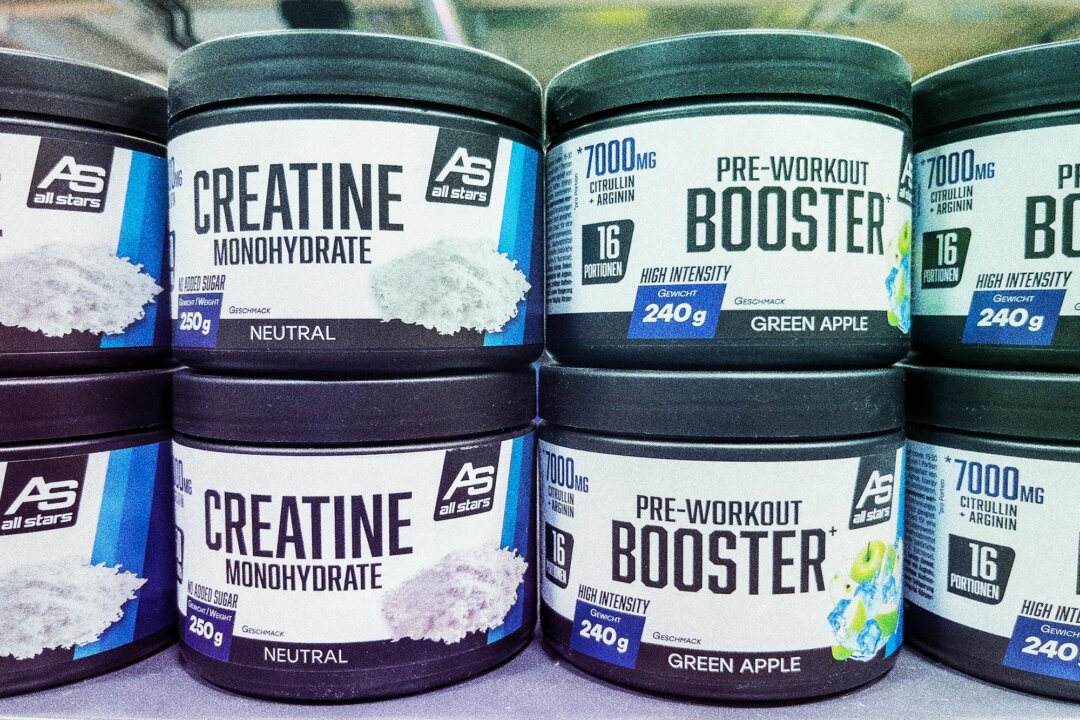At 6 p.m., caffeine is king.
Across the country, gym-goers scoop powder into shaker bottles, chasing a last burst of energy to fuel evening workouts. Pre-workout supplements, called “pre-workouts,” promise a better workout through energy-enhancing ingredients. Pre-workouts are powdered supplements mixed with water and taken before exercise.

They offer a jolt of energy, sharper focus, and more stamina—a caffeinated cocktail for the fitness crowd. “It is often recommended to ingest the supplement 30–60 minutes before exercise with the goal of improving the quality of your workout—i.e.
, increased energy, focus, delayed sensations of fatigue, [and] improvements in muscular endurance or strength,” Andrew Jagim, a sports medicine researcher at Mayo Clinic Health System, told The Epoch Times. With consistent use and structured training, he noted, pre-workouts may contribute to greater gains in strength and muscle mass compared to training alone. While pre-workouts may enhance energy and endurance, they aren’t a magic bullet.
However, there’s no standard formula, leaving consumers guessing amid a sea of options. The most common ingredients include: “I recommend selecting products with an open, transparent label,” said Jagim. “A lot of products tend to either be under-dosed or include ingredients in a proprietary blend, making it challenging to know if there is enough of the key ingredients.
” Consumers face a crowded and confusing market. Many formulas blend stimulants, amino acids, and nootropics, but research primarily focuses on single ingredients like caffeine or creatine. The combined effects, especially when stacked with other supplements, are still poorly understood.
“The lack of long-term safety data is of concern,” said Jagim. Regular use, he noted, may pose cardiovascular or cognitive risks that remain understudied. Despite their popularity, the science behind pre-workout supplements remains unsettled.
Few clinical trials are registered in advance—a key step in research transparency—and even fewer report side effects. The wide variation in formulas makes it difficult to determine which ingredients are truly effective or potentially harmful. The review noted: “Optimal forms and strategies on MIPS consumption and use has not yet been rigorously examined.
” “The clearest benefits are improvements in muscular endurance, meaning the ability to perform as many reps as possible before failure,” said Jagim. “Additionally, some of the more consistent benefits are cognitive, with people frequently reporting improvements in mood, focus, energy, and alertness.” That mental boost can be crucial when motivation dips at the end of a long day.
Caffeine and nootropics may sharpen focus and are one reason pre-workouts have become a late-night gym staple. Physical gains depend on effort. Regular, high-level training brings the most benefit, said Jagim.
“If someone doesn’t consistently push themselves to near maximal levels, the supplement and key ingredients may not exert as strong of effects.” Not all users see the same effects. Some ingredients like beta-alanine and creatine need consistent use to show results.
Others, such as caffeine, act quickly but vary widely in impact depending on dose and personal tolerance. “Caffeine has an average half-life of about five hours,” said Lyon. “Poor sleep is one of the fastest ways to sabotage your training progress, so it’s important to consider timing and dosage if you’re using caffeine-based supplements.
” Lyon agrees. “For most active adults, pre-workouts aren’t essential,” she said. “If you’re prioritizing muscle health with high-quality protein, nutrient-dense meals, hydration, and recovery, your body already has what it needs to perform.
” Experts emphasize the basics: sleep, nutrition, hydration, and consistent effort. “If you give 50 percent effort in the gym,” said Jagim, “adding a supplement to your daily routine isn’t going to do much and is likely a waste of money.” Caution is key for those who use pre-workouts.
Choose third-party tested products certified by groups like NSF International to ensure accurate labels and clean ingredients. Some prefer a pick-me-up without pre-workout. “Coffee or green tea can offer mild stimulation without the overload,” said Lyon.
“I also like adaptogens like rhodiola or ginseng, which can support endurance and focus without the crash.” Non-stimulants like beetroot, citrulline, or beta-alanine may also boost blood flow and reduce fatigue. Some users use amino acid supplements like BCAAs (branched-chain amino acids) or EAAs (essential amino acids).
While these won’t deliver the immediate jolt of a typical pre-workout, they may help reduce fatigue and support endurance, especially in fasted workouts or low-carb training. Their real strength lies in recovery and muscle repair, not stimulation. Don’t stack pre-workouts with other stimulants, and always follow dosing, especially if caffeine makes you jittery.
Skip them altogether if you’re under 18 or managing a medical condition, and always consult a doctor first. Training later in the day? A stimulant-free version may be the better choice. “Caffeine after 2 p.
m.,” Jagim said, “may disrupt sleep and delay sleep onset,” which can undermine recovery and performance. In the end, the best pre-workout might not come in a tub.
It could be a banana, a sandwich, or just the right playlist. “Don’t underestimate the power of a good warm-up and playlist—mental cues matter,” said Lyon. No powder replaces effort.
And no scoop substitutes showing up..
Health

What Every Gym-Goer Should Know About Pre-Workout Supplements

Experts weigh in on the potential benefits and downsides of popular workout supplements.













